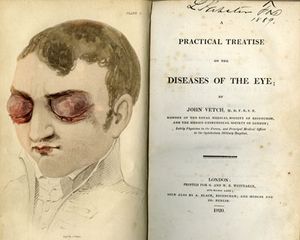AUG 13, 2020
Notable Dates in Ophthalmology - Fall 2020
A collection of historical facts and dates, courtesy of Daniel M. Albert, MD, MS, associate editor of ophthalmic history for Scope.
25 years ago (1995)
Following up on a suggestion published by Frederick H. Verhoeff before he died in 1968, investigators in the David Cogan pathology laboratory at Harvard demonstrated that vitamin D caused regression of retinoblastoma in the eyes of transgenic mice. The major mechanism was inhibition of angiogenesis.
50 years ago (1970)
J. Donald Gass from the Bascom Palmer Eye Institute published his stereoscopic atlas of macular disease. This atlas included his pioneering contributions to the delineation of diseases of the retina.
75 years ago (1945)
Raynold N. Berke from Columbia Presbyterian Hospital presented his thesis “Resection of the levator palpebrae for ptosis with anatomical studies” to the American Ophthalmological Society.
140 years ago (1880)
Helen Adams Keller was born in in Tuscumbia, Ala. on June 27, 1880. She became blind and deaf at 18 months as a result of an infection, possibly rubella or scarlet fever. Her education and training in which her teacher and lifelong companion Anne Sullivan played a major role were a remarkable achievement at the time. Her emergence as an author, political activist and lecturer won her world-wide acclaim as a symbol of courage in overcoming her handicaps. She died on June 1, 1968.
200 years ago (1820)
London physician John Vetch published an experiment in which pus from the purulent conjunctivitis of a man was transferred to the urethra of another man. This caused purulent infection of the urethra within 36 hours.

Image from, A Practical Treatise on Diseases of the Eye by John Vetch, MD. Courtesy of the Truhlsen-Marmor Museum of the Eye™.
500 years ago (1520)
Paracelsus, a physician, chemist, theologian and philosopher who introduced chemistry into medicine, publicly burned the works of Galen and Avicenna in the city of Basel. This is considered by some historians to symbolize “the final closing of ancient methods of medical practice.”